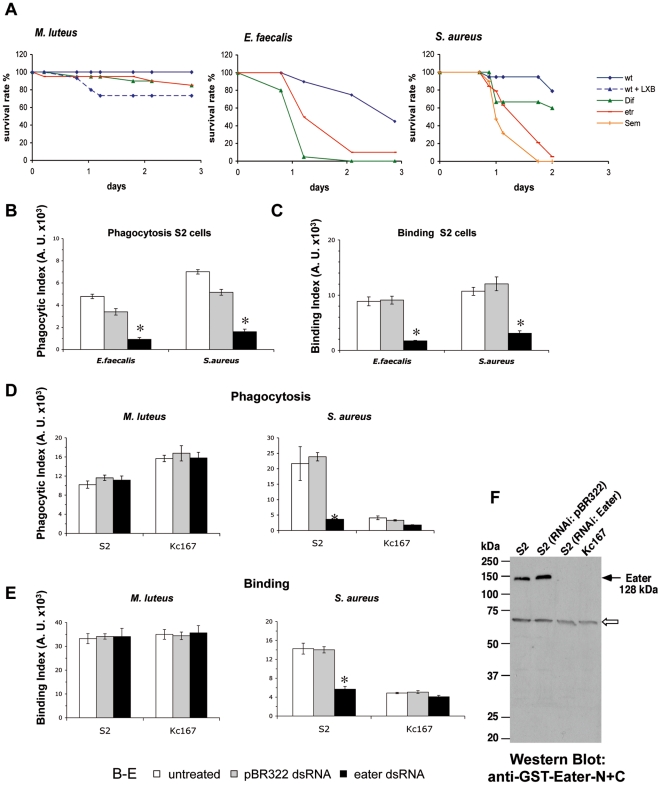Figure 3. The phagocytic receptor Eater plays an important role in the Drosophila host defense against E. faecalis and S. aureus but not M. luteus.
A. Flies were either preinjected with latex beads (LXB) or nontreated and then submitted to a septic injury with M. luteus (A), E. faecalis (B) and S. aureus (C). Eater mutant flies succumbed rapidly to a challenge with S. aureus and E. faecalis but not with M. luteus. (A. wt vs. wt + LXB : p = 0.0176; wt vs. eater : p = 0.0214. B. wt vs. eater : p = 0.0003. C. wt vs. Dif : p = 0.13; wt vs. eater : p<0.0001; wt vs. seml : p<0.0001). The survival rate expressed in percentage is shown. B-E. FACS analysis of phagocytosis and cell surface binding of heat-killed fluorescent bacteria to hemocyte-derived cell lines. To assess phagocytosis, extracellular fluorescence was quenched by trypan blue. The amount of phagocytosis (or cell surface binding) was quantified as percentage of cells phagocytosing (or binding) multiplied by mean fluorescence intensity. Error bars represent SD between four samples. * indicates : significantly different (p<0.01). B, C. RNAi knock down of Eater in S2 cells affects phagocytosis and binding of FITC-E. faecalis and S. aureus. D, E. RNAi knock down of Eater in S2 and Kc167 cells does not affect phagocytosis (D) and binding (E) of M. luteus. F. Eater protein is not detectable after RNAi knockdown in S2 cells and in Kc167 cells: Western Blot of cell extracts corresponding to 84 µg of protein separated on a 10% SDS-gel. A 128 kDa band corresponding to the Eater protein (black arrow) was present in S2 cells, whereas it was undetectable in S2 cells after RNAi knockdown of eater, or in untreated Kc167 cells. Control knockdown had no effect on eater expression. A nonspecific band at around 70 kDa (open arrow) served as an internal loading control.

